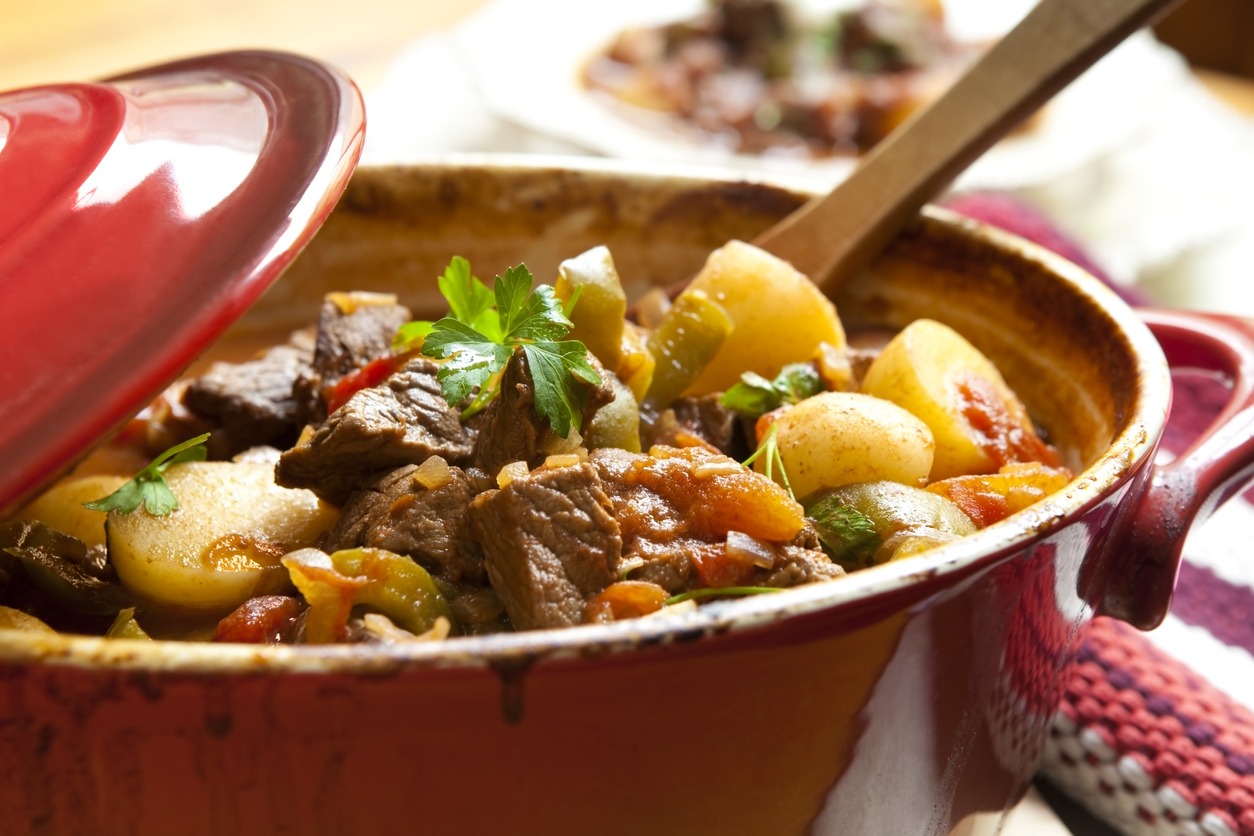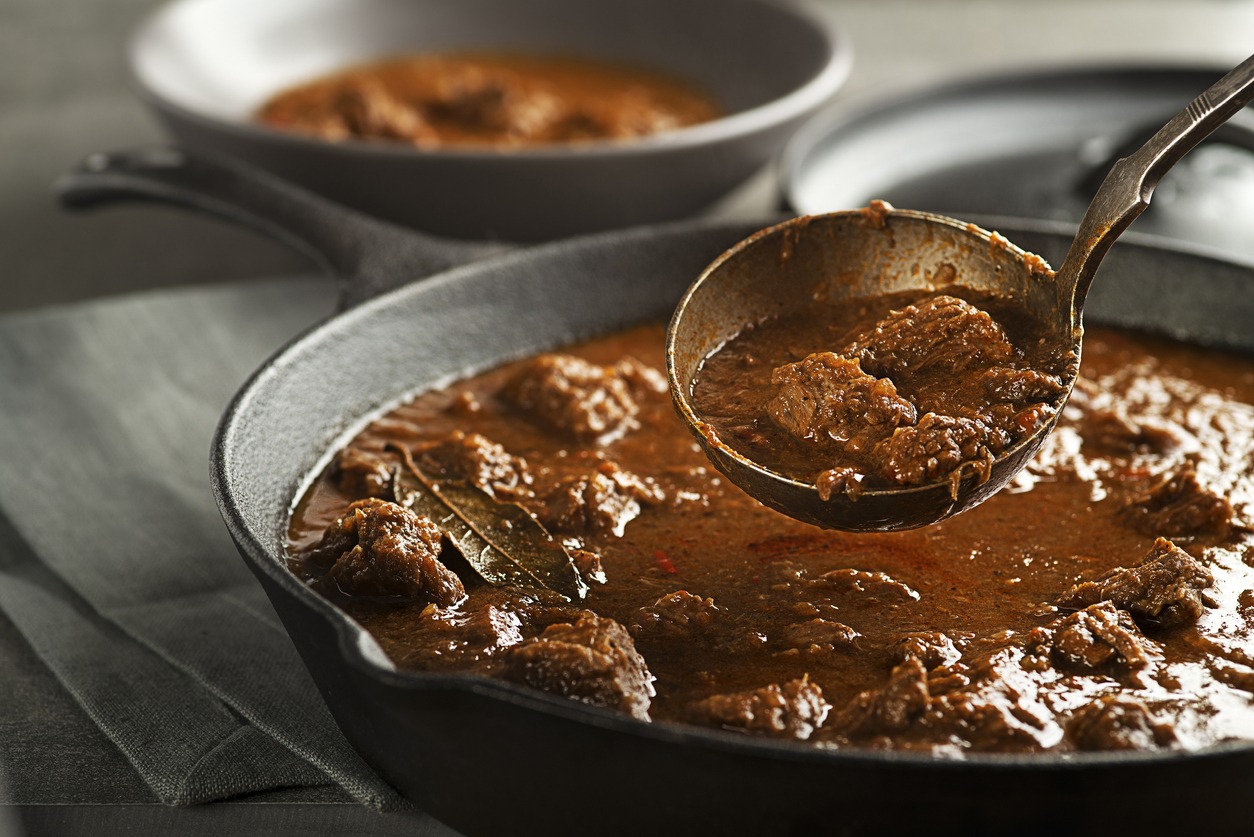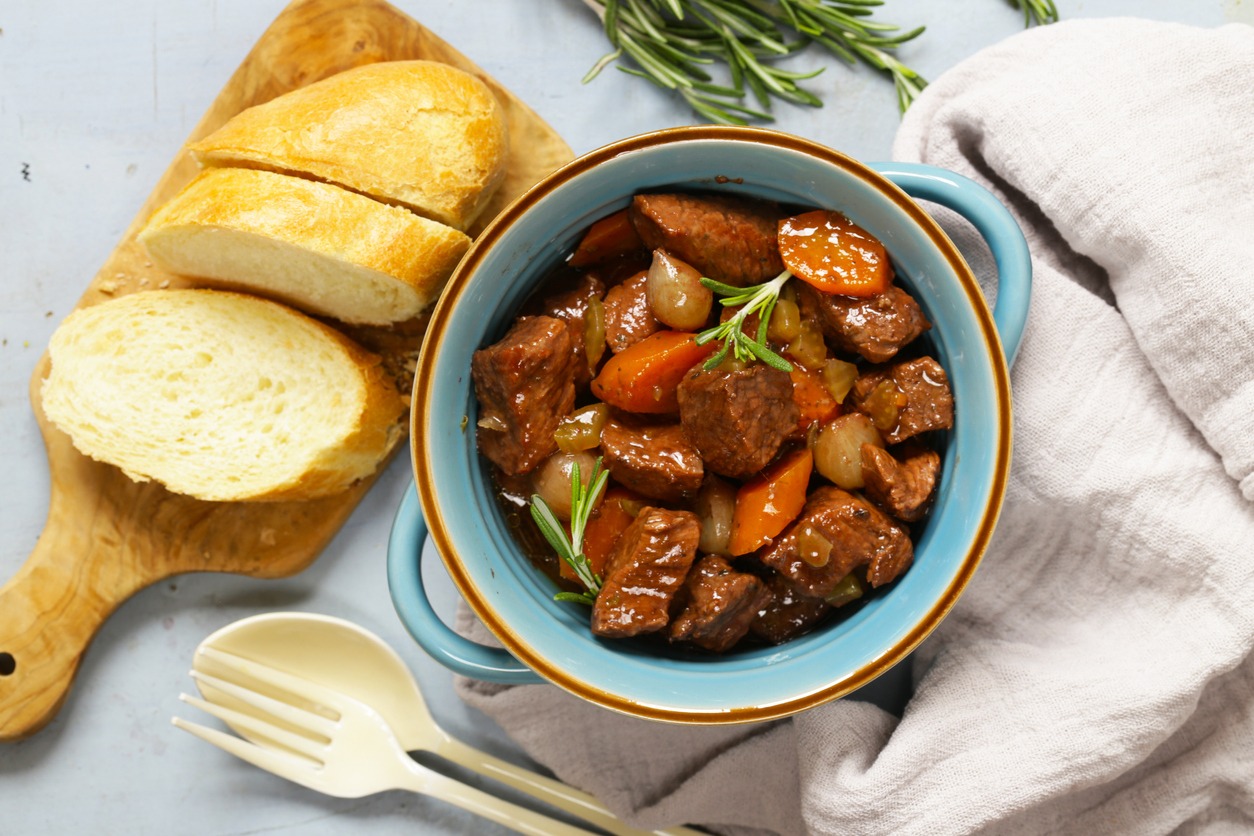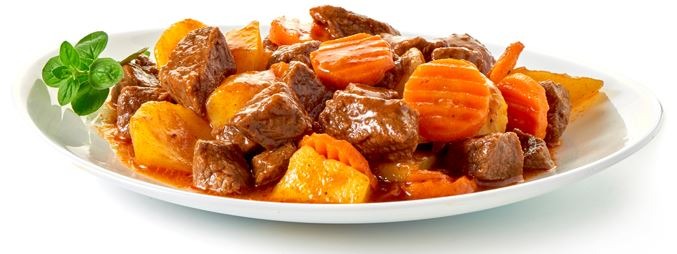Peposo alla Fornacina (Beef Stew) is a dish that is a specialty from Impruneta, a small town in the hills surrounding Florence renowned for its famous terracotta production.
In fact, the dish was invented in times past by the men working in the kilns. It can be recalled that in the XV century, there was a great demand for terracotta bricks to build the Brunelleschi Dome.
It is for this reason that the kiln workers or fornacini in Italian had to labor hard for longer times and shifts. The invention of this peppery stew was made possible as the dish allowed the turning of the meat of the third category cuts into a more tasty and tender meal.
In that manner, the laborers of the terracotta bricks could get enough energy and sustenance to work long hours.
Tuscany is known for making virtue a necessity and also for the indigenous ingredients of the area, thereby giving birth to this tasty dish: Red wine, rosemary, and sage from the wild, as well as the kiln furnace and some meat, which surely was not ‘choice and lean’, as it is today.
Following its tradition in Impruneta, which is located just outside of Florence on the road toward Chianti, the dish Peposo alla Fornacina (Beef Stew) has been handed down from one generation to another until it created a trademark in the world’s cuisine.
For the long, slow cooking process, the wine and pepper were perfect for preparing peposo, which had to be eaten with a lot of bread and drunk with a lot of good local wine.
For delicate stomachs (as the famous Pellegrino Artusi would say), you may prefer to use peppercorns instead of ground black pepper.
Beef Stew
Recommended wine pairing: Nipozzano Montesodi or Lucente.
Chef: Donatella Zampoli
Ingredients:
4 cloves of garlic
4 onions
fresh rosmarin, and sage
1 glass of extra virgin olive oil
4.5 lb beef muscle ready for cooking
1 bottle of REMOLE- Frescobaldi red WINE
A 9-inch ovenproof dish with a lid in terracotta
1 flame spreader to use under the dish on the gas burner
Steps in cooking Peposo alla Fornacina (Beef Stew):
- Either way, the dish is really tasty. Put together all the ingredients and utensils so that you can prepare this tasty dish yourself: 4.5 lbs of beef muscle, an ovenproof terracotta dish, and a bottle of red Remole wine.
- The only thing you’ll have to add is the pepper, 4 onions, 4 cloves of garlic, a handful of sage and rosemary and three peeled tomatoes together with half a glass of extra virgin olive oil.
- In a slow cooker, or on a low gas burner, simmer for at least four hours. Check every now and again to stir with care.
Furthermore, food writer Manila, who also manages wine tastings at the Montefioralle Wine blog, wrote about another way of cooking this peppery stew, Peposo alla Fornacina (Beef Stew).
As suggested by her, this peppery stew is cooked for several hours in the kiln openings, thus giving the nature of this special dish.
Interestingly, you can serve it with fantastic wines, like IGT Monteficalle, Riserva, and la Gran Selezione, as the best pairing for this equally awesome dish.
Ingredients:
2 tablespoons of peppercorns
2 cloves of garlic
8 tablespoons of Extra Virgin olive oil
2 tablespoons of ground pepper
2 kg of veal meat (the muscle) cut in large cubes
1 bottle of Chianti Classico
Salt to taste
Steps in cooking:
- Pour the oil in a large pan and brown the meat well.
- Put the cubes slowly, leaving them only a couple of minutes in the pan on high heat.
- By the time the meat turns brown, add it to the pan and put the pepper, whole garlic, and a bottle of Chianti Classico.
- Stew cook on very low heat covered with a lid for about 1.5 hours.
- Remove the lid and let it simmer for another 2 or 3 hours until the veal meat gets tender and the liquid becomes a thick sauce.
- Add salt while cooking.
- Add a little warm water if the meat turns too dry before the stew is done.
Happy eating!
Some interesting and fun facts about stew
- In the Western World, Meat stews are categorized as white or brown.
- Vegetarian stews can include vegetables simmered in vegetable broth.
- Stew is now known as comfort food.
- While soups are generally served in a bowl, stews can be served on a plate with gravy as sauce if thick enough.
- Stewing is a fantastic thing to do when you have the least tender slices of meat.
- Stewing is perfect when you have cuts of meat that have gelatinous connective tissue to come up with juicy and moist meat.
- Stewing of the dish is virtually found in all cuisines around the world.
- In French, the word “stew” means estuier, or to enclose.
- Historians found lamb stew and fish stew in the oldest cookbooks.
- Stews were also found in Le Viandier, a 14 th century cookbook written in French.
- In the Amazonian culture, some groups use the shells of a turtle as a vessel in stewing dishes.
- Other food materials that ca be stewed include seafood, poultry, and sausages.
- Stew is a dish of solid food ingredients cooked gradually in the liquid inside a closed pan or dish or pan.
- The essential ingredients in cooking stew may be vegetables or meat.
- The invention of pottery made stewing easier and widespread in almost all corners of the globe.
- Stews are versatile. It can be added with mashed potatoes, biscuits, rice, or patty shells.
- Stew is best served during dinner or on a cold day.
- There are different versions of stewing dishes in every cultural group around the world.
- Stew is perfect for cooking tough meat like beef or mutton.
- Irish stew, stobhach gaelach or ballymaloe, generally contains mutton or chunks of lambs.
- In West Virginia, USA, rat stew is part of American cuisine.
- The stew is called brown when it is cooked in fat before the liquid is added. It is white when the meat is not cooked in fat before the water is added.
- Stews are similar to soups. However, there is more liquid in soups compared to stews.




